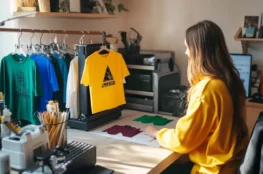When South African surgeon Christiaan Barnard performed the world’s first human heart transplant in 1967, it changed medicine forever. Fast forward a few years, and we come across a gripping story from Barstow Hospital. A young baby, Stephanie Fae Beauclair, affectionately known as Baby Fae, was diagnosed with a rare heart condition. With a limited array of solutions available, an audacious proposition came forward – to transplant a baboon heart into her tiny chest.
The Beginning: An Unexpected Arrival
Stephanie Fae Beauclair entered the world three weeks ahead of her due date. She was tiny, weighing just five pounds, and exhibited a disconcerting blue hue. Her condition was diagnosed as Hypoplastic Left Heart Syndrome (HLHS), a severe congenital heart disease. Her mother, Teresa, faced a heart-wrenching decision – to let Stephanie pass away at home or to seek hospitalization.
A Surgeon’s Frustration and Ambition
Enter Dr. Leonard Lee Bailey, a Loma Linda surgeon. Bailey was no stranger to HLHS and was deeply affected by the numerous infant fatalities he witnessed due to the condition. He believed heart transplants were a solution, but there was a hitch: a severe scarcity of donor organs. Bailey’s proposed solution was radical – xenografting, or organ transplantation from animals.
Xenografting: A History of Mixed Results
While the concept of xenografting was not new, its track record was far from promising. From a 68-year-old receiving a chimpanzee heart in 1964 to the famous Dr. Barnard’s baboon heart transplant in the 1970s, the results were always the same: rejection and death. But Bailey was optimistic; with new immunosuppressants and correct immunological compatibility, he believed xenografting could be a bridge solution until a human heart became available.
The Daring Decision
In the face of Stephanie’s deteriorating health, Bailey approached Teresa with his audacious proposal. Despite many arguing for the genetic similarity between humans and chimpanzees, Bailey, grounded in his Seventh-Day Adventist beliefs, chose a baboon for the transplant. The procedure was meticulous and taxing, but against all odds, the baboon’s heart started beating within Baby Fae.
Triumph, Tragedy, and Controversy
The world watched as Baby Fae showed signs of improvement, and for a brief period, hope blossomed. However, the triumph was short-lived. Stephanie’s body eventually rejected the baboon heart, leading to her tragic passing just 21 days post-surgery.
The Baby Fae case became a lightning rod for controversy. Ethicists, animal rights activists, and medical professionals debated the morality, ethics, and scientific merits of such an experiment. Was it a desperate attempt to save a child’s life or a step too far in the name of scientific advancement?
Legacy and Reflections
Though Baby Fae’s transplant was deemed a failure, its legacy is undeniable. Bailey continued his work, conducting the first successful infant human heart transplant the following year. The procedure became a foundational pillar of his illustrious 42-year career. While Baby Fae’s procedure didn’t yield the desired outcome, it undeniably accelerated medical discourse around neonatal heart transplantation.
Baby Fae’s story underscores the profound ethical dilemmas faced in the pursuit of medical advancements. It reminds us that behind every scientific experiment, there’s a human story, replete with hope, despair, courage, and sacrifice.




